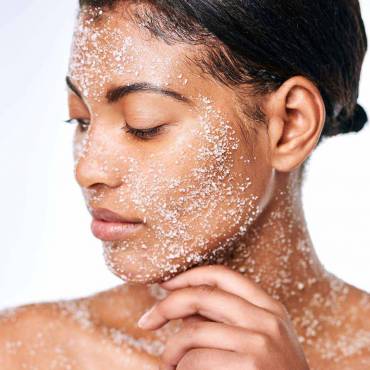If you are fed up with acne, spots, blackheads, and other similar complications arising from oily skin, read these skincare tips to create an appropriate skincare routine for oily skin.
Recognizing and Understanding Oily Skin
Oily skin is sometimes difficult to control and manage due to genetically determined hormonal changes in your body. Androgens, also known as the male hormones, are present in both men and women and are responsible for oily skin. They encourage healthy oil production, and while that is truly beneficial for your skin, it poses a problem when androgens stimulate excess oil production. This causes the pores to become larger to accommodate excess oil production. Excess stimulation by androgens can also cause the pore lining to become thick, which blocks oil from getting out of the pore and results in blackheads and white bumps.
The following tips will help you recognize an oily skin:
-
- Your face regains an oily shine only an hour or two after cleansing and generally appears greasy by noon.
- The makeup from your face seems to “slide” or fade away.
- The areas of your face that secrete more oil have blackheads, white bumps, or acne.
- The pores are visible, especially on your forehead, chin, and nose.
Skincare for Oily Skin
The first step in an oily skincare routine is to look significantly at your present skincare regime. It is important to be gentle throughout your oily skin routine.
Using oily skin products with drying ingredients may seem like a good treatment because they make your skin feel less oily at first, but using such ingredients is an awful idea in the future. Irritating or drying ingredients only worsen matters because they produce more oil in the oil gland.
Avoid products that contain pore-clogging or emollient ingredients, which may worsen your oily skin by clogging pores and making your skin look greasy. Consider using only liquid, serum, or gel formulations.
Step-by-Step Routine for Oily Skin
The following steps of skin care for oily skin include cleansing, toning, exfoliating, A.M. sun protection, P.M. hydration, and absorbing excess oil will help you take control of your oily skin.
-
- Cleanse:
Cleanse your skin by using a gentle, water-soluble cleanser twice daily. An ideal cleanser rinses without leaving a hint of residue does not contain drying cleansing agents such as sodium lauryl sulfate, and should be fragrance-free.
- Cleanse:
-
- Tone:
An alcohol-free toner packed with antioxidants and cell-communicating ingredients is an important treatment for oily skin. Toners containing these ingredients help heal your skin, diminish large pores by decreasing inflammation, and eliminate the last traces of dead skin cells or makeup that can clog your pores.
- Tone:
-
- Exfoliate:
Exfoliation is one of the most essential steps in the skin routine for oily skin. Oily skin tends to develop an extra-thick layer of dead skin cells over itself, along with a solidified pore lining. You can easily remove that build-up of dead skin cells by exfoliating. It also helps reduce clogged pores and white bumps and makes your skin feel smoother.
-
- M. Sun Protection:
Even if you have oily skin, wear sunscreen to prevent wrinkles and diminish red marks. Look for sunscreens that have less consistency, are weightless, and help keep your skin lusterless or matte. You can also consider wearing a matte-finish liquid foundation, which offers protection of SPF 25 or greater, and a pressed powder with SPF 15 or greater.
-
- M. Hydration:
Applying a lightweight liquid, gel, or serum at night is a good choice. Go for a product that contains ingredients that do not clog your pores and that can provide moisture while treating your oily skin with the vital ingredients (such as antioxidant, cell-communicating, and skin-repairing ingredients) all types of skin need to function in a normal and healthy manner.
-
- Absorb Excess Oil:
As your skin starts to feel better, you may still need to use oil-absorbing products regularly. This is an optional step, but many will find this treatment for oily skin helpful.
Skin routine for oily skin should be strictly followed to achieve the best results. All these above steps collectively make the best skin care for oily skin. In addition, use a serum, eye cream, and clay mask to control sebum production and cleanse skin pores. Ensuring that your skincare products for oily skin are compatible with your skin type is important. Also, avoiding over-cleansing, especially the facial skin, is important as it can lead to inflammation and acne breakouts.
Conclusion:
Follow the best skincare routine for your oily skin and get all set to flaunt your flawless and smooth skin. Be sure to get the best products for oily skin to achieve the best results.
Also Read: Morning vs Night: Tailoring Your Skin Care Routine for Optimal Results



